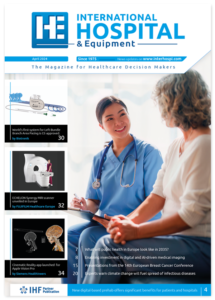Siemens Healthineers and ScreenPoint Medical sign agreement to jointly develop AI-based applications in breast imaging
Siemens Healthineers and ScreenPoint Medical have agreed to partner to develop artificial intelligence-based applications for breast imaging. This collaborative arrangement also includes the acquisition of a strategic minority stake in ScreenPoint Medical by Siemens Healthineers.
The partnership intends to leverage the superior expertise of Siemens Healthineers in breast imaging as well as that of ScreenPoint Medical in mammography decision support to develop innovative clinical applications for breast cancer screening and diagnosis. Professor Nico Karssemeijer, CEO of ScreenPoint Medical, explains, “together with Siemens Healthineers, we can bring our expertise in AI into the entire screening and diagnostic pathway, starting from risk stratification to image acquisition and diagnosis.”
“The aim of our collaboration with ScreenPoint Medical is to expand precision medicine by providing automated clinical decision support that makes it easier and faster to distinguish between healthy and tumour tissue, thus increasing diagnostic accuracy,” adds Dr. Pete Schardt, head of X-ray Products at Siemens Healthineers. “Working with strong partners such as ScreenPoint will help us drive personalized breast care pathways with new applications based on deep learning and artificial intelligence.”
Both companies pool their individual strengths in their strategic partnership. ScreenPoint Medical’s current, highly innovative mammography reading software, Transpara, is available for a variety of mammography systems. It enables clinical decision support and computer-aided detection for higher reading accuracy. It has been proven to help radiologists better detect breast cancer with mammography and reduce variations between different users – both aspects integral in expanding precision medicine. Transpara is cleared for clinical use for CE-countries with the digital mammography and reading portfolio of Siemens Healthineers. In the coming months, ScreenPoint plans to attain regulatory approvals for the Transpara solution in further clinical applications and countries.
Siemens Healthineers has a long-standing history of innovations in breast imaging and a comprehensive portfolio of systems across ultrasound, mammography and MRI as well as the accompanying reading solutions. The latest addition in mammography, Mammomat Revelation, offers the highest depth resolution on the market with a unique 50-degree wide angle for tomosynthesis. Automated and precise breast density measurements allow for instant risk stratification. On the reading side, Syngo.BreastCare offers advanced visualization for 2D and 3D mammography with automatic workflows and Artificial Intelligence (AI)-based tomosynthesis reading.
www.siemens-healthineers.comwww.screenpoint-medical.com

